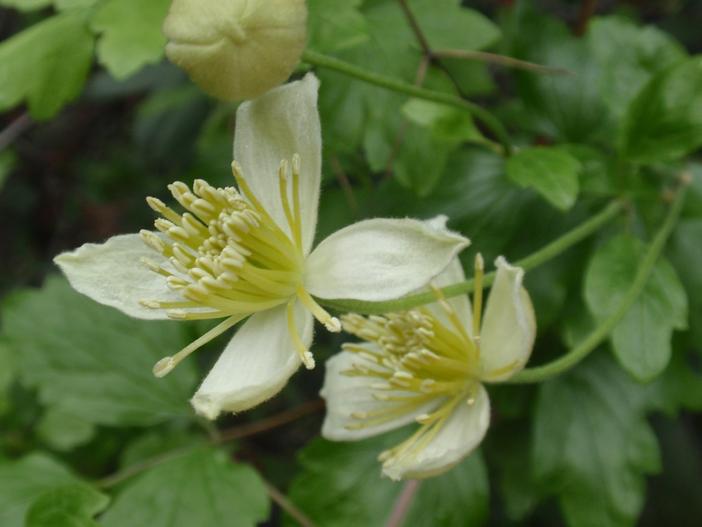Pipestem Clematis
(Clematis lasiantha)
Pipestem Clematis (Clematis lasiantha)
/
/

Tom Hilton
CC BY 2.0
Image By:
Tom Hilton
Recorded By:
Copyright:
CC BY 2.0
Copyright Notice:
Photo by: Tom Hilton | License Type: CC BY 2.0 | License URL: https://creativecommons.org/licenses/by/2.0/ | Uploader: Tom Hilton | Publisher: Flickr

























Estimated Native Range
Summary
Clematis lasiantha, commonly known as Pipestem Clematis, is a deciduous liana vine native to coastal chaparral, open woodlands, and forest edges in the Pacific regions of North America, from the San Francisco Bay Area southwards into Baja California and east to the western foothills of the Sierra Nevada mountains. It is not found in the Central Valley nor at altitudes above 2,000 meters (6,600 ft). This vine typically climbs with the aid of twining petioles and can reach lengths of up to 20 feet. It features creamy-white, fragrant flowers that are about 1 inch in diameter, blooming profusely from January to June, which are particularly attractive to butterflies.
Pipestem Clematis is valued for its early and extended flowering period, making it a favorite for trellises, arbors, and fences in gardens. It is also used for naturalizing in wild garden settings. While it can tolerate a range of light conditions, from full sun to part shade, it thrives best with some protection from intense afternoon sun. This vine prefers soils with medium to fast drainage and has low to medium water requirements once established. It is relatively easy to maintain, but can be susceptible to clematis wilt, a fungal disease that causes sudden collapse of the plant. To prevent this, good air circulation around the plant is recommended.CC BY-SA 4.0
Pipestem Clematis is valued for its early and extended flowering period, making it a favorite for trellises, arbors, and fences in gardens. It is also used for naturalizing in wild garden settings. While it can tolerate a range of light conditions, from full sun to part shade, it thrives best with some protection from intense afternoon sun. This vine prefers soils with medium to fast drainage and has low to medium water requirements once established. It is relatively easy to maintain, but can be susceptible to clematis wilt, a fungal disease that causes sudden collapse of the plant. To prevent this, good air circulation around the plant is recommended.CC BY-SA 4.0
Plant Description
- Plant Type: Vine
- Height: 8-20 feet
- Width: 2-3 feet
- Growth Rate: Rapid
- Flower Color: Cream, White
- Flowering Season: Spring, Summer
- Leaf Retention: Deciduous
Growth Requirements
- Sun: Part Shade
- Water: Low, Medium
- Drainage: Fast, Medium
Common Uses
Bee Garden, Bird Garden, Butterfly Garden, Drought Tolerant, Fragrant, Hummingbird Garden, Rabbit Resistant, Showy Flowers
Natural Habitat
Native to coastal chaparral, open woodlands, and forest edges
Other Names
Common Names: Pipestem clematis
Scientific Names: , Clematis lasiantha,
GBIF Accepted Name: Clematis lasiantha Nutt. ex Torr. & A.Gray